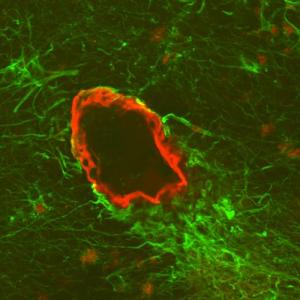

This post was written on location by Oregon State University Student and SBE Member, Madeline Midgett.
Protein Fibrils in Amyloid Diseases

The first session of ICBE continued with the theme of last night's keynote speaker, focusing on evolutionary engineering, this time with proteins. The session started with a presentation from Georges Belfort of Rensselaer Polytechnic Institute, where he spoke on his research's effort to learn more about protein fibrils which induce amyloid diseases. The main goals were, first, to determine the rate-limiting factor during fibril growth, and second, to figure out how the fibrils grow spatially. Fibrils are dissolved at basic pH and then allowed to reaggregate at a low pH. The majority of the sample is separated from the toxic materials using diafiltration, and then further studied. Even though more than 20 amyloid diseases have been identified, little is known on how toxic fibrils are formed.
Using Knottin Peptides for Imaging
Sarah Moore, from Stanford University, spoke on the engineering of knottin peptides to bind the tumor marker carbonic anhydrase IX. CA IX is a promising tumor maker target because it is surface localized, has limited expression in healthy tissue, and has a deep binding pocket. Using knottin peptides, is a much better alternative for imaging purposes than antibodies. Engineered knottins with nanomolar affinity to CA IX can be a very efficient way to image tumor cells.
New Approaches for Therapeutic Proteins
Another speaker who had an innovative evolutionary engineering protein approach was Thomas Mansell from Cornell. His research focused on in vivo measuring and modeling of N-linked glycosylation in E.coli. Transferring the machinery of protein glycosylation into a high-titer host like E. coli, has the potential to greatly increase the efficiency of therapeutic proteins.
Therapeutic Advantages of Peptide-Knots
A. James Link of Princeton University explained the therapeutic advantages and physical assembly of peptide-knots. Peptides have a high number of intermolecular contacts with antibody-like binding. The downside of peptides is that they have a poorly-defined structure and are subject to degradation. Link has found a way to overcome these drawbacks by using Phe and Tyr residues to lock the tail of a peptide-knot into place. A peptide-knot is an angstrom-scale slipknot that is a rigid, knotted framework and made using biosynthetic pathways from bacteria. The structure has high resistance to thermal and chemical degradation, which makes it a good candidate for therapeutic and diagnostic applications.


